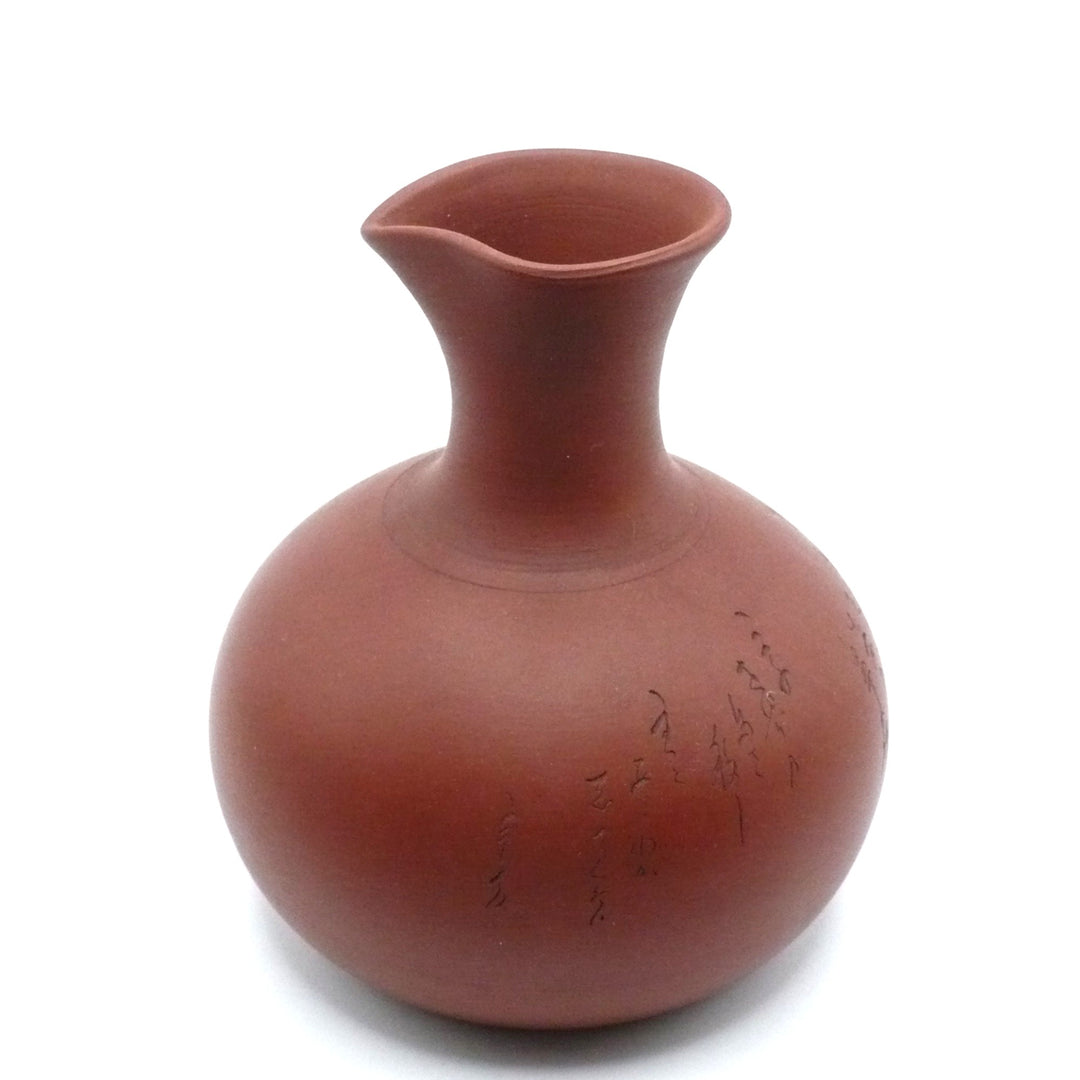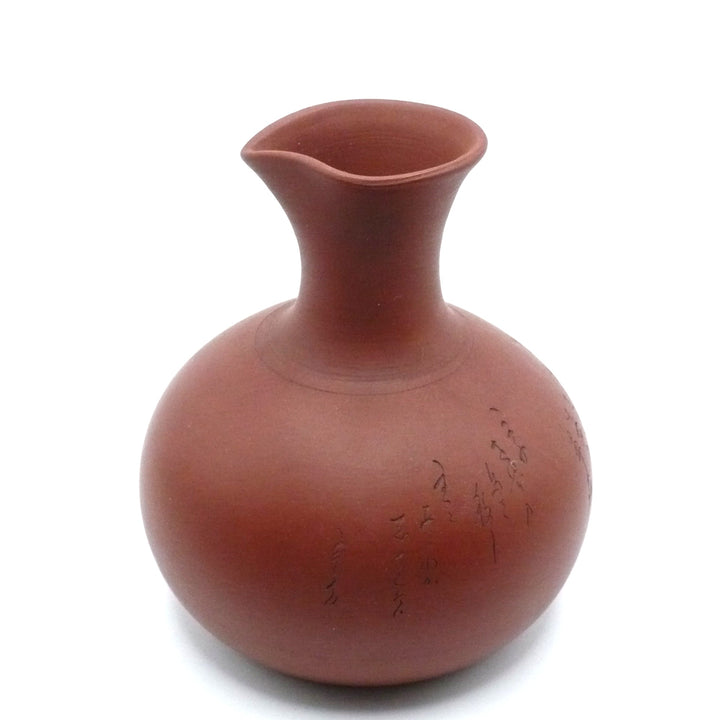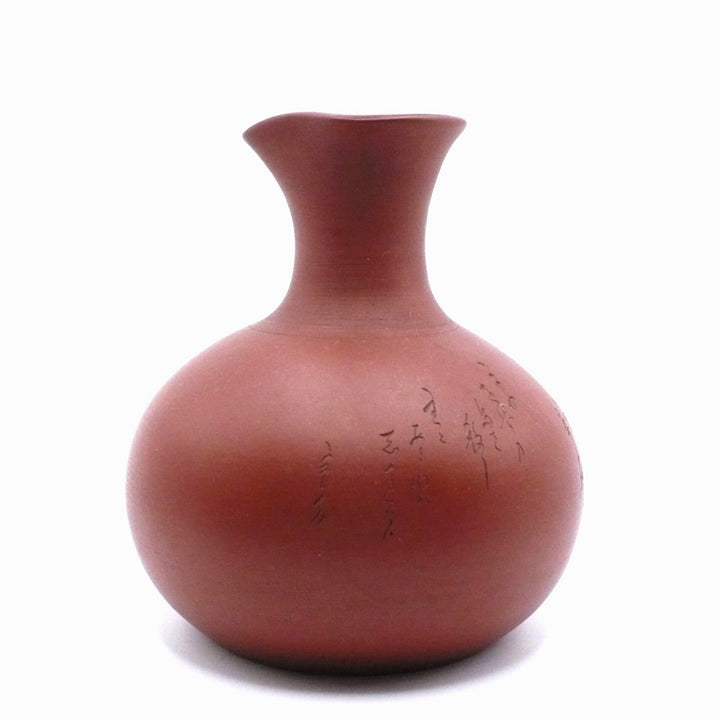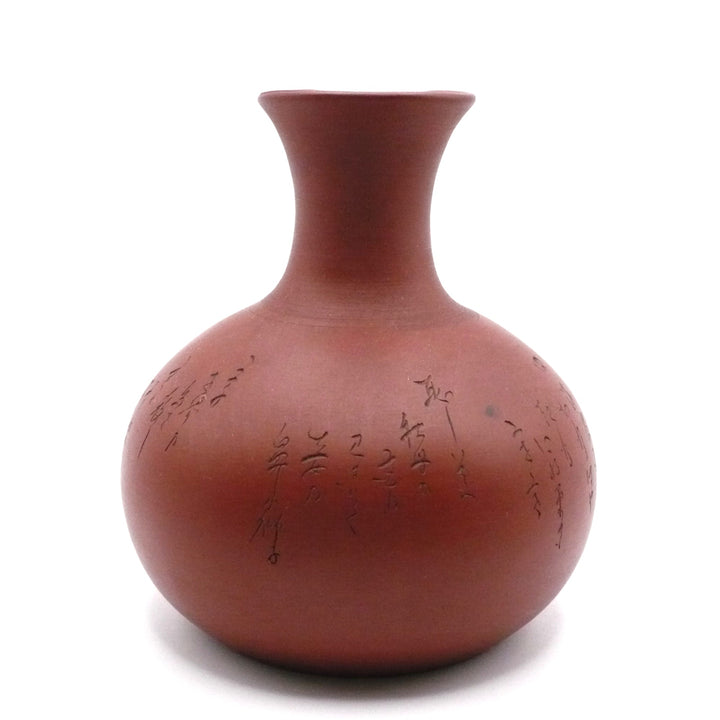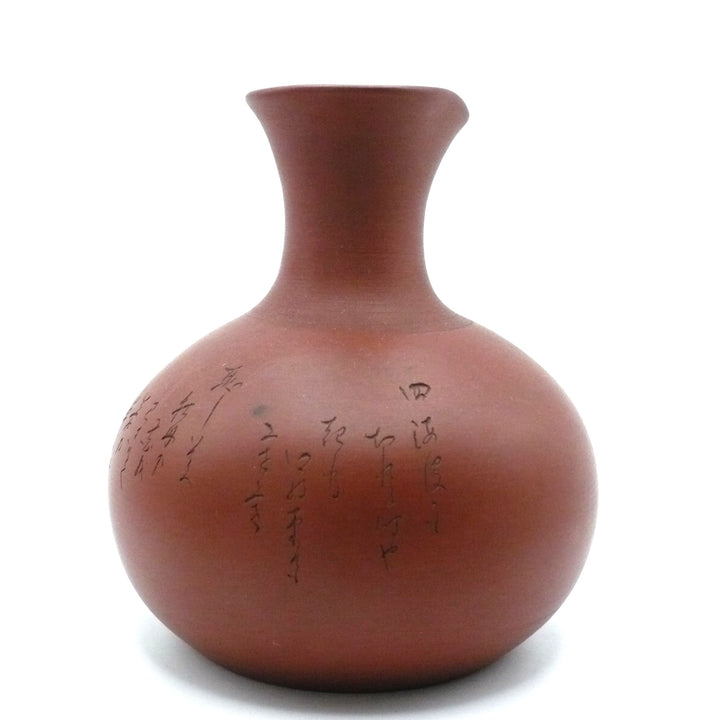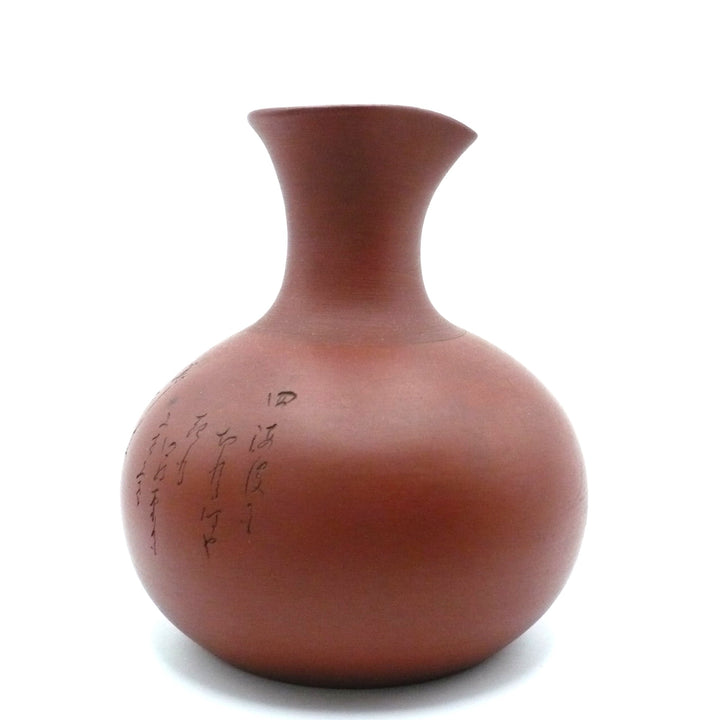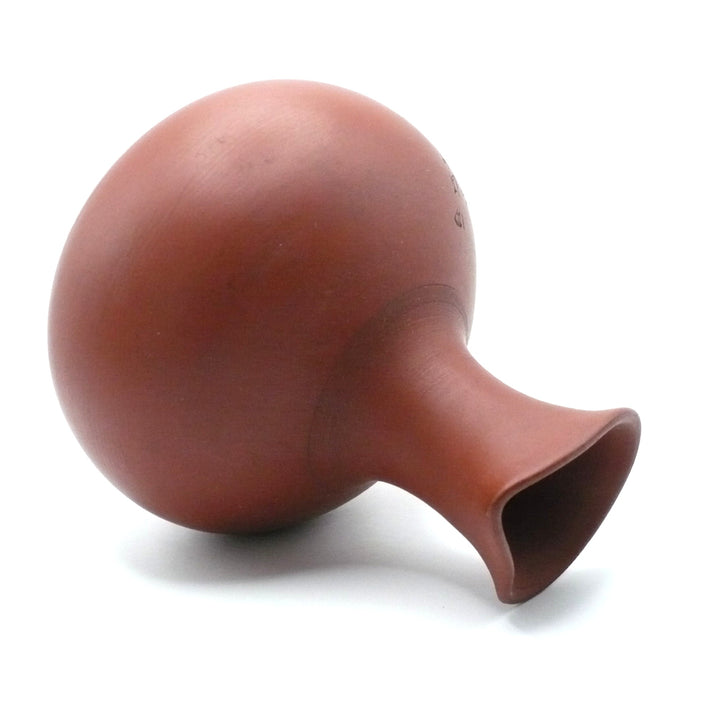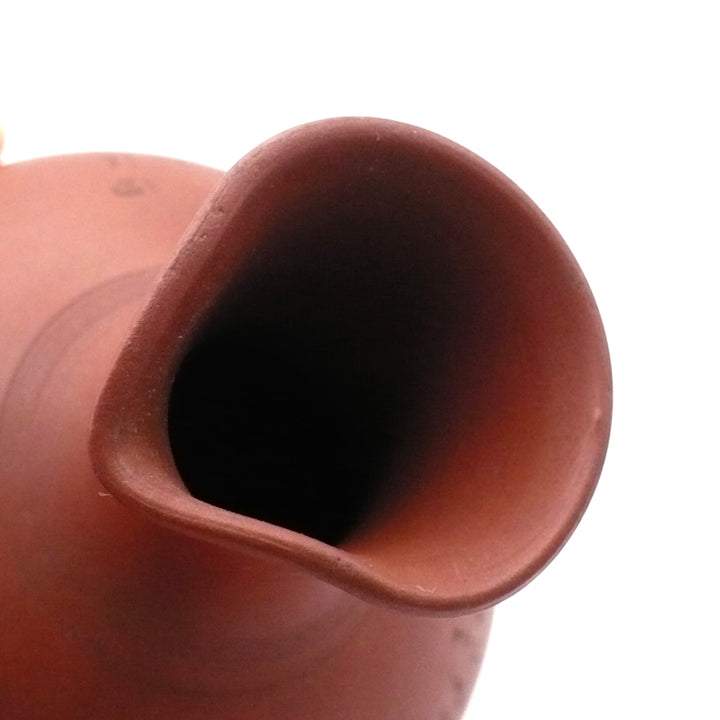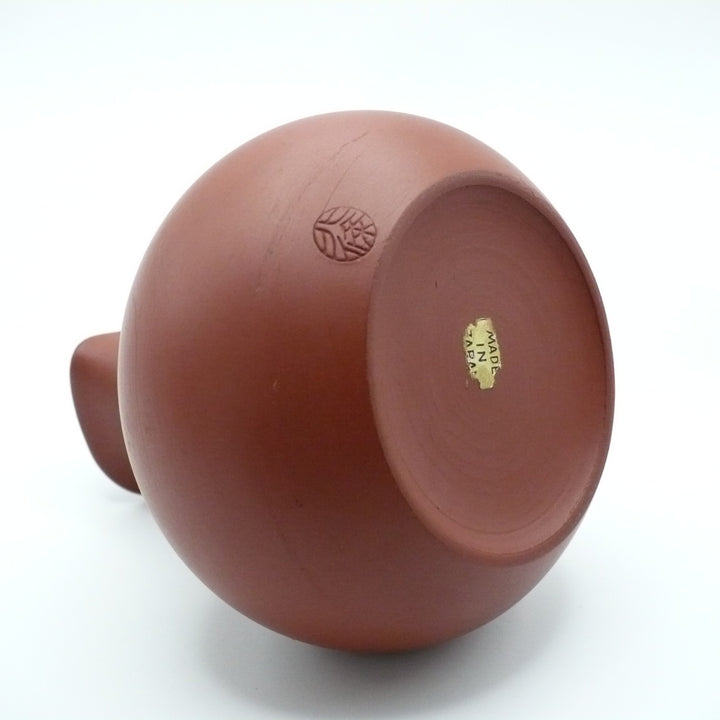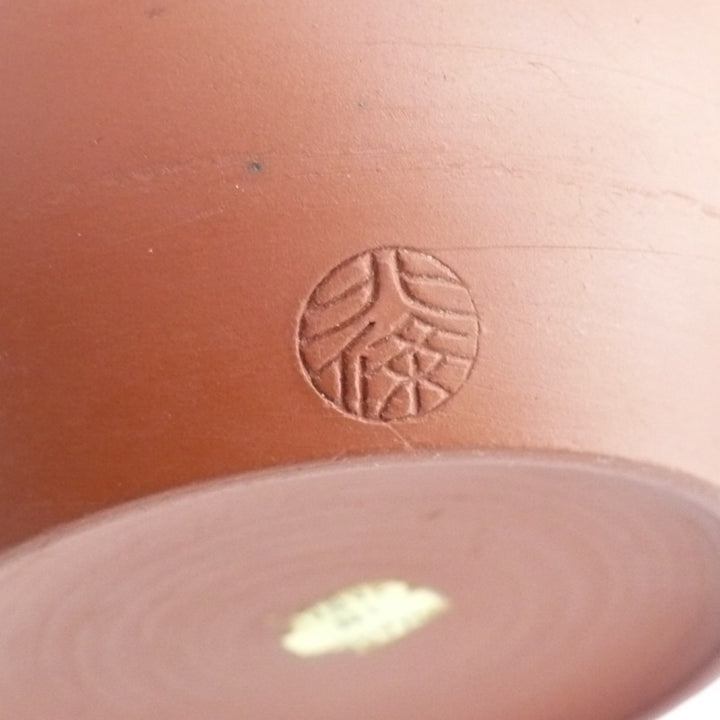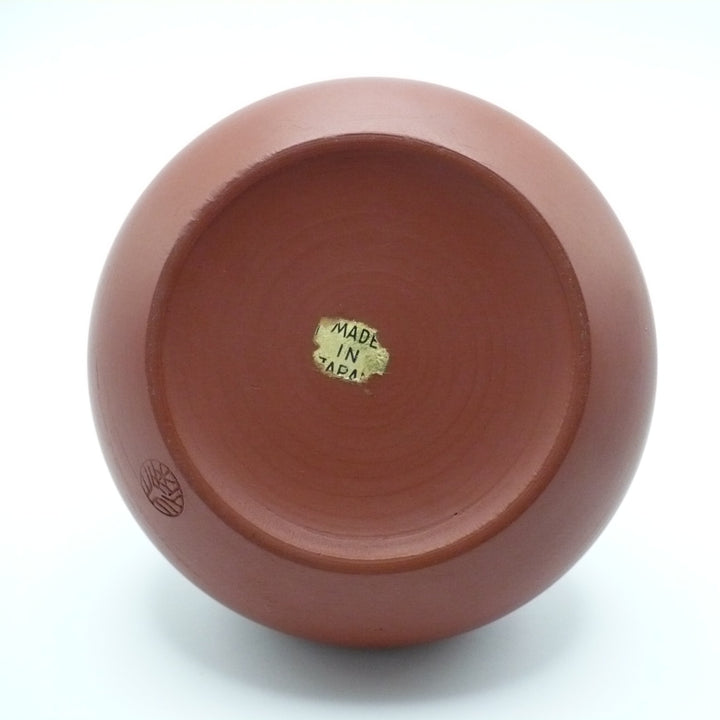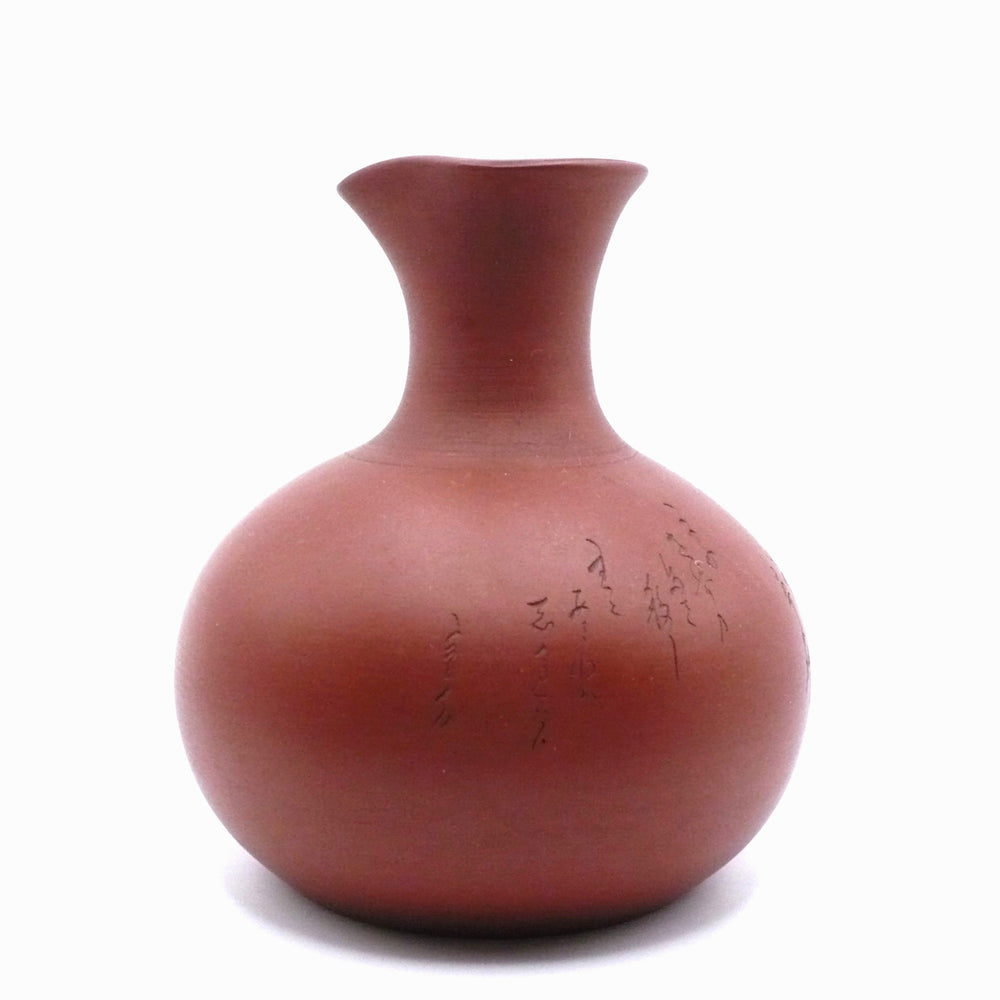This elegant sake pouring vessel has been part of a single family collection spanning four generations. It dates to the Shōwa Period, and originates from the Tokoname region of Japan, renowned for its centuries-old ceramic tradition. The vessel’s compact size and graceful form reflect traditional Japanese aesthetics. At the same time, the unique feature of three classical waka poems incised on its bulbous body elevates it beyond ordinary studio pottery to a true cultural treasure. Bearing a gold foil “Made in Japan” sticker on the base, this piece was initially intended for post-war export.
The vessel is made of Tokoname-ware’s distinctive red clay, known as shudei, prized for its warm, rich color and fine texture. Tokoname, one of Japan’s Six Ancient Kilns, has a ceramic tradition dating back over a thousand years. This naturally iron-rich clay is unique to the Tokoname region and, when fired, develops a deep, earthy red tone with subtle variations that bring it to life. The surface is unglazed but expertly burnished, creating a soft, velvety sheen that feels as refined as it looks. Tokoname’s shudei clay, with its rare mineral makeup and centuries-old craftsmanship, is highly valued in tea and sake ceremony contexts and is not found anywhere else in the world.
The vessel’s form, a katakuchi with a lip formed into a spout, is a classic style used for pouring sake, combining functional design with artistic grace. The maker’s seal, inscribed with the character 倖 can be translated as “happiness,” “good fortune,” or “blessing,” suggesting the artisan’s wish to imbue the vessel with auspicious meaning.
The tradition of incising poetry on ceramics has deep roots in Japanese culture, where poetry and craftsmanship intertwine to express refined aesthetics. By engraving waka poems, a classical Japanese poetic form consisting of five lines, onto vessels, artisans create not just utilitarian objects but also carriers of literary and spiritual resonance. Such inscriptions connect the drinker to centuries of cultural history and thought, enhancing the experience of sake drinking as a contemplative ritual.
The first poem incised on this vessel is by Fujiwara no Kanesuke (877–933), included as poem number 97 in the renowned Hyakunin Isshu anthology, a collection of one hundred classical poems by one hundred poets. Its English translation reads:
In the salt fields
where fishers burn the brine
even their sleeves
are soaked through
yet my feelings remain unchanged.
The second poem, by Fujiwara no Teika (1162–1241), one of Japan’s most influential poets and waka compilers, reflects on impermanence and the nature of life:
It is by knowing
the time to fall
that flowers are truly flowers
and people, truly people.
The final poem, believed to be authored by the artisan, evokes the coming of spring and the gentle persistence of memory:
All around is good
can one forget
in the young grasses of the fields
the spring wind blows.
Period: Shōwa Period,1953-1970 base sticker was commonly used, provenance shows a trip to Tokyo in 1971
Origin: Tokoname, Japan
Materials: Clay
Size: Small, cabinet-sized and well-suited for display
Approximate Dimensions: 10 cm (4 inches) high, 9 cm. (3 1.2 inches) wide
Signed/Maker: 倖, a kanji character signifying happiness or fortunate blessing, we have not yet been able to identify the artisan who used this mark
Decoration: Incized poetry
Colors: A warm, earthy red
Condition: Excellent. No flaws noted. Expected wear on the base sticker.
Given its provenance, the exceptional quality of its Tokoname-ware red clay, and the rare presence of multiple classical waka inscriptions, including verses by Fujiwara no Kanesuke and Fujiwara no Teika, this sake pourer represents a remarkable intersection of ceramic artistry and literary heritage. Its synthesis of material refinement, poetic tradition, and historical craftsmanship makes it an especially compelling acquisition for collectors of Japanese ceramics, calligraphy, and literary culture. Pieces of this nature, where function is inseparable from aesthetic and intellectual depth, are increasingly rare on the market and resonate deeply with connoisseurs of both form and meaning.
Love it ♡
Get it ☆
Get Lucky 💋 Vintage


